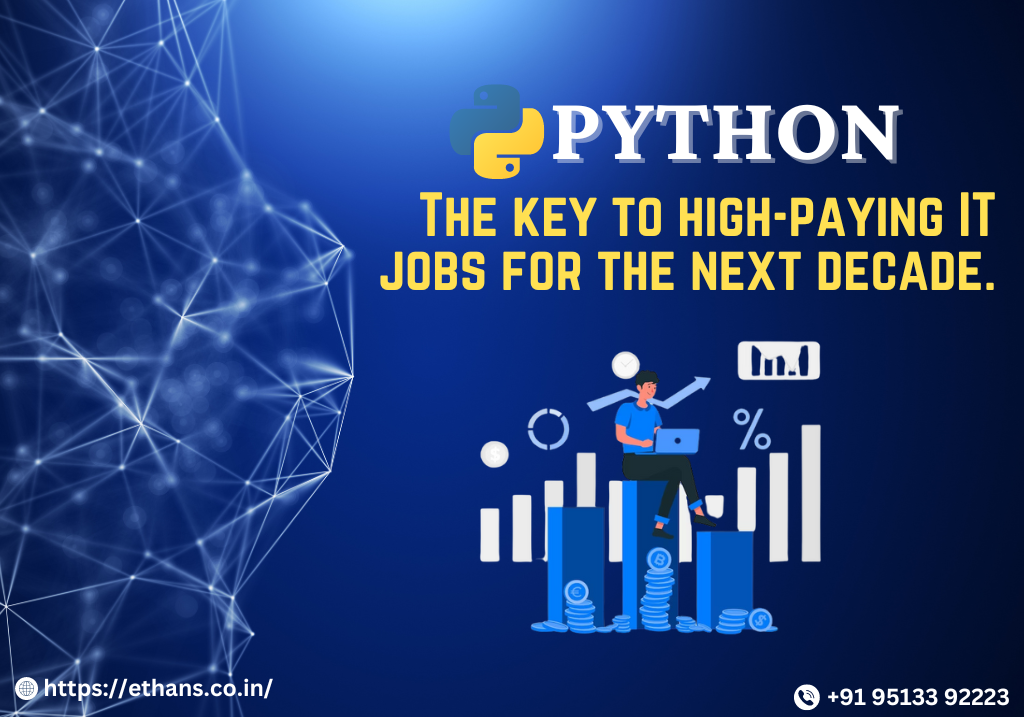Introduction
Python is a high-level programming language known for its simplicity, versatility, and readability. It is widely used across various industries and domains due to its rich ecosystem of libraries, ease of learning, and broad applicability. Let’s explore how Python’s qualities contribute to high-paying IT jobs opportunities and the types of roles you can land with Python skills.
Python stands out as a versatile and robust programming language celebrated for its simplicity, clarity, and adaptability. Crafted by Guido van Rossum and unveiled in 1991, Python prioritizes readability, empowering developers to articulate concepts concisely compared to other coding languages.
What sets Python apart is its ability to transcend boundaries. It serves as the backbone for an array of applications, spanning web development, data analytics, AI, machine learning, automation, and scientific computations. This vast applicability owes much to its expansive standard library and an extensive repository of third-party tools and frameworks.
Python’s syntax is elegantly uncomplicated, akin to everyday language, fostering accessibility even for novices. Its user-friendly nature has fostered widespread adoption across industries and educational institutions alike. Moreover, Python’s dynamic typing and automatic memory management lend themselves to swift prototyping and iterative refinement.
In recent times, Python has emerged as a frontrunner in data science and machine learning realms. This ascent is fueled by powerhouse libraries such as NumPy, Pandas, Matplotlib, and TensorFlow, empowering developers with formidable capabilities for data manipulation, exploration, and model creation.
Why Python is Easy to Understand
Python is renowned for its simplicity and readability, making it an ideal choice for beginners and experienced developers alike. Here are some reasons why Python is considered good and easy to understand:
Simple Syntax
Python’s syntax is straightforward and easy to understand, resembling pseudo-code more than other programming languages. This simplicity reduces the learning curve for new developers and makes the code easier to read and maintain.
Readable Code
Python emphasizes readability, with clean and concise code that is easy to follow. The language enforces indentation to denote code blocks, which enhances code clarity and structure.
Rich Standard Library
Python comes with a comprehensive standard library that provides a wide range of modules and functions for various tasks, from file I/O to networking to data manipulation. This extensive library reduces the need for external dependencies and simplifies development.
Dynamic Typing
Python is dynamically typed, meaning variable types are determined at runtime rather than explicitly declared. This flexibility allows developers to focus on solving problems rather than worrying about type declarations, making the code more expressive and concise.
Interpreted Language
Python is an interpreted language, which means code execution occurs line by line, allowing developers to quickly test and iterate on their code. This immediate feedback loop speeds up development and debugging processes.
Community Support
Python has a large and active community of developers who contribute to open-source projects, share knowledge, and provide support through forums, tutorials, and documentation. This vibrant community makes it easy for developers to find resources and solutions to common problems.
Versatility
Python is a versatile language that can be used for a wide range of applications, including web development, data analysis, machine learning, artificial intelligence, automation, and more. This versatility makes Python a valuable skill for developers across various industries.
Structure of Python
Overall, Python’s simplicity, readability, rich ecosystem, and community support make it an excellent choice for beginners and experienced developers alike, contributing to its popularity and widespread adoption in the software development industry. Here I am sharing structure of Python:
1. Simplicity and Readability
Python’s syntax is designed to be intuitive and easy to understand, making it an ideal language for beginners and experienced developers alike. Its clean and concise code structure enhances readability, making it easier to maintain and debug codebases. This quality of Python attracts employers looking for developers who can write efficient and maintainable code.
2. Versatility and Broad Applicability
Python’s versatility allows it to be used in various domains, including web development, data science, machine learning, artificial intelligence, automation, and more. Its extensive standard library and third-party packages provide solutions for a wide range of tasks, from building websites to analyzing large datasets. This broad applicability ensures that Python developers have a diverse range of job opportunities across industries.
3. Strong Community Support
Python boasts a vibrant and active community of developers, contributors, and enthusiasts who collaborate on open-source projects, share knowledge, and provide support. The Python community contributes to the continuous improvement and evolution of the language, ensuring that it remains relevant and up-to-date with emerging trends and technologies. Access to community resources, forums, and online tutorials makes it easier for aspiring developers to learn Python and enhance their skills, thereby increasing their employability.
4. High Demand in the Job Market
Python’s popularity has surged in recent years, leading to a high demand for Python developers across industries. Companies of all sizes, from startups to tech giants, rely on Python for developing software applications, conducting data analysis, implementing machine learning algorithms, and automating business processes. As a result, Python developers are highly sought after in the job market, with a wide range of job opportunities available in various roles and domains.
High-Paying Jobs Available Through Python Skills
In summary, Python’s qualities such as simplicity, versatility, community support, and high demand in the job market make it an excellent choice for aspiring developers looking to kickstart their careers or advance their existing skills. By mastering Python programming and exploring its diverse applications, individuals can unlock a wide range of job opportunities and pursue rewarding careers in the dynamic field of technology.
Are you passionate about programming and looking to carve out a successful career in the tech industry? Python, one of the most versatile and widely-used programming languages, offers a plethora of exciting job opportunities across various domains. Whether you’re a seasoned developer or a fresh graduate, there’s a role in Python that could be the perfect fit for you. Let’s delve into some of the lucrative career paths available in the world of Python.
Python Developer
As a Python developer, you’ll be responsible for writing efficient, reusable, and reliable code using Python programming language. You’ll work on developing software applications, web development projects, and backend systems. Python developers are in high demand across industries, including technology, finance, healthcare, and e-commerce.
We can explain about Python Developer in the form of Software Developer as well, Python is widely used in software engineering for developing desktop applications, system utilities, and automation scripts. As a software engineer, you’ll design, develop, and maintain software applications using Python. Whether it’s building graphical user interfaces with Tkinter or developing command-line tools, Python offers endless possibilities for software engineers.
Data Scientist
Data science is a rapidly growing field, and Python is the go-to language for data analysis and machine learning tasks. As a data scientist, you’ll analyze complex datasets, build predictive models, and derive actionable insights from data. Proficiency in Python libraries such as Pandas, NumPy, and Scikit-learn is essential for this role.
Machine Learning Engineer
Machine learning engineers design, build, and deploy machine learning algorithms and models to solve real-world problems. Python’s extensive libraries, such as TensorFlow, Keras, and PyTorch, make it the preferred choice for machine learning development. In this role, you’ll work on projects ranging from image recognition to natural language processing.
Full Stack Developer
Full stack developers are proficient in both frontend and backend development. Python’s versatility allows full stack developers to build scalable web applications, RESTful APIs, and database systems. With frameworks like Django and Flask, Python makes it easy to develop robust and feature-rich web applications.
DevOps Engineer
DevOps engineers play a crucial role in streamlining the development and deployment processes. Python is extensively used for automation, configuration management, and infrastructure provisioning tasks in DevOps. As a DevOps engineer, you’ll leverage Python scripts and tools like Ansible and Terraform to automate repetitive tasks and optimize workflows.
Python offers a myriad of exciting career opportunities for aspiring professionals. Whether you’re interested in web development, data science, machine learning, or software engineering, Python has something to offer. By mastering Python programming skills and staying updated with the latest trends and technologies, you can embark on a rewarding career journey in the dynamic world of tech.
Uses of Python
Python is like a magic wand for the digital world. It can do almost anything you can think of! From building websites and apps to crunching numbers and analyzing data, Python’s got it covered. It’s the go-to tool for programmers, scientists, engineers, and even artists because it’s easy to learn, versatile, and oh-so-powerful. Whether you’re a beginner or a coding wizard, Python is your trusty sidekick for bringing your ideas to life in the digital realm.
Python is used in a variety of fields and industries because of its versatility and ease of use. Here are some common uses of Python:
-
Web Development:
Python is widely used for web development. Frameworks like Django and Flask make it easy to build powerful and scalable web applications.
-
Data Science and Machine Learning:
Python has become the go-to language for data science and machine learning projects. Libraries like NumPy, Pandas, and TensorFlow are widely used for data manipulation, analysis, and building machine learning models.
-
Automation:
Python is great for automating repetitive tasks. Whether it’s automating file processing, web scraping, or sending emails, Python’s simplicity and flexibility make it an ideal choice.
-
Scripting:
Python is commonly used for writing scripts to automate tasks on the command line or perform system administration tasks.
-
Game Development:
Python is used in game development, both for building games from scratch and for scripting within game engines like Unity and Pygame.
-
Desktop Applications:
Python can be used to build desktop applications using frameworks like Tkinter or PyQt.
-
Scientific Computing:
Python is used extensively in scientific computing for simulations, modeling, and visualization tasks.
-
Education:
Python’s readability and simplicity make it a popular choice for teaching programming concepts to beginners.
Modules of Python
Python is continually evolving, and its ecosystem of libraries and modules is constantly expanding to meet the needs of developers and users. Here are some of the latest modules and libraries in Python:
- PyTorch: PyTorch is an open-source machine learning library developed by Facebook’s AI Research lab. It provides tensor computation with GPU acceleration and is widely used for building deep learning models.
- FastAPI: FastAPI is a modern, fast (high-performance), web framework for building APIs with Python 3.7+ based on standard Python type hints. It is easy to use, fast to code, and highly efficient.
- Pandas: While not new, Pandas continues to receive updates and improvements. It is a powerful library for data manipulation and analysis in Python, offering data structures and operations for manipulating numerical tables and time series data.
- Scikit-learn: Another staple in the machine learning community, Scikit-learn is a simple and efficient tool for data mining and data analysis. It provides a range of supervised and unsupervised learning algorithms in Python.
- TensorFlow: TensorFlow is an open-source machine learning framework developed by Google. It provides tools and resources to build and deploy machine learning models at scale, with support for deep learning, neural networks, and distributed computing.
- Streamlit: Streamlit is a popular library for creating interactive web applications with Python. It allows developers to build and deploy data-driven apps quickly and easily, with support for data visualization, user input widgets, and more.
- Pydantic: Pydantic is a data validation and settings management library for Python. It provides runtime type checking and validation of data structures using Python type annotations, making it easy to validate and parse data from external sources.
- Plotly: Plotly is a graphing library for creating interactive, publication-quality graphs and charts in Python. It supports a wide range of chart types and offers interactive features such as zooming, panning, and hover tooltips.
- Dask: Dask is a parallel computing library for Python that enables scalable, distributed computing. It provides parallel versions of pandas data structures and operations, allowing users to scale their data analysis workflows to large datasets.
- Pytest: Pytest is a testing framework for Python that makes it easy to write simple and scalable tests. It provides features such as automatic test discovery, fixtures, and parameterization, making it suitable for testing all types of Python applications.
These are just a few examples of the latest modules and libraries in Python. As the Python ecosystem continues to grow and evolve, developers can expect to see even more innovations and improvements in the future.
Unraveling Python’s Allure: Why Businesses Embrace this Dynamic Language
Companies love Python for many reasons, mainly because it’s super easy to use. Companies often prefer Python for several reasons, one of the primary ones being its user-friendly nature. Here are some key factors and Here’s why Python rocks, contributing to Python’s popularity and reputation as a user-friendly language:
- Easy to Read:
Python makes coding feel like reading a book. It’s so clean and straightforward that developers can understand and work on it without breaking a sweat. This means less time scratching heads and more time building cool stuff.
- Does It All:
Python is like a Swiss Army knife for programming. Need to build a website? No problem. Analyze data? Sure thing. Teach a computer to think? Python’s got your back. It’s like having a superhero language for every coding task.
- Packed with Goodies:
Python comes with a treasure trove of pre-made tools and tricks, right out of the box. Think of it as a magic toolbox filled with everything you need to get the job done—no need to reinvent the wheel or start from scratch.
- Friends Everywhere:
The Python community is like a big, friendly family. They’re always ready to lend a hand, share tips, and swap stories. With so much support and knowledge at your fingertips, there’s no problem too big to solve.
- Works Everywhere:
Whether you’re using Windows, Mac, or Linux, Python plays nice with all of them. It’s like the universal language of computers, so you can write code once and run it anywhere without any fuss.
- Plays Well with Others:
Python is like the cool kid who gets along with everyone. It can easily team up with other languages and technologies, making it a breeze to add Python to your existing projects or mix and match with other tools.
In a nutshell, Python’s simple, versatile, and packed with goodies. With a supportive community, universal compatibility, and seamless integration, it’s the go-to choice for companies looking to level up their coding game.
Conclusion
Python stands tall as a beacon of innovation and opportunity in the realm of programming. Its well-crafted structure, coupled with its inherent simplicity and versatility, makes it a powerhouse in the tech world.
At its core, Python’s elegant structure promotes readability and ease of use, empowering developers of all levels to express complex ideas with clarity and precision. Its extensive library of modules and frameworks provides a robust foundation for tackling a myriad of tasks, from web development to data analysis and beyond.
But Python’s allure goes beyond its technical prowess. Its user-friendly nature fosters a welcoming environment for beginners and seasoned professionals alike, nurturing a vibrant community of learners and experts.
In the fast-paced landscape of technology, Python sets the standard for market adaptability and demand responsiveness. Its ability to seamlessly integrate with emerging technologies and swiftly address evolving market demands positions it as a frontrunner in driving innovation and progress.
In conclusion, Python’s unparalleled combination of structure, versatility, user-friendliness, and market adaptability makes it not just a programming language, but a gateway to endless possibilities. As we embrace the future of technology, boost your IT career with Ethan’s Tech Python Training—master the skills needed for high-paying jobs in the next decade!




